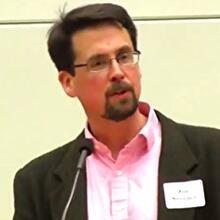St. Francis of Assisi, as most of us know, preached to the birds, freed pigeons from their cages, cared for turtledoves, blessed fish, communicated with wolves and used real animals when he created the very first, live, Christmas nativity scene. We also know that he was the first Westerner to grasp the importance of animals for the believer. But was he?
One warm afternoon early in his ministry (sometime between 1210-15), Francis wandered outside of Assisi, questioning his choices, asking God if perhaps everything he had done up until that point had been for the wrong reasons. He wondered if he should have gotten married and raised a family, as his father wanted him to do.
Francis was always the most critical of himself, but it was on just such an afternoon that he saw some birds along the path and spoke to them as if to equals. That day may be said to mark the beginning of the environmental movement, the start of the era when we began to understand ourselves as intrinsically connected to all of creation.
The saint of Assisi exhibited a sensitivity to the living and organic things around him that sets him apart from the other people of his day—and the saints who came before him. He even cared for the inanimate objects of creation with a sensitivity that is similar to Buddhist teachings about kindness toward all sentient beings. One of the most beautiful paragraphs of The Golden Legend by Jacobus of Voragine (the classic late medieval text about the lives of the saints) explains:
The saint would not handle lanterns and candles because he did not want to dim their brightness with his hands. He walked reverently on stones out of respect for him who was called Peter, which means stone. He lifted worms from the road for fear they might be trampled underfoot by passersby. Bees might perish in the cold of winter, so he had honey and fine wines set out for them. He called all animals brothers and sisters. When he looked at the sun, the moon, and the stars, he was filled with inexpressible joy by his love of the Creator and invited them all to love their Creator.
This connection between St. Francis and animals is the single fact about him that most people know. He emphasized that creation includes more than humankind. And he always called creatures his brothers and sisters and he worked to further widen the fraternity to link humans and creatures in the same relationship with God. But was he the first person to bless the animals? Judaism, long home to blessings of all kinds, may have come first.
Many synagogues now have their own blessing of the animals ceremonies, and scholars say the idea originated in ancient Judaism. The Jewish ceremony is often performed on the seventh day of Passover as a celebration of the Hebrews’ (and their animals’) emancipation from slavery in Egypt more than 3,000 years ago. Why not exult in the freedom of all creatures from bondage, and not just the humans? Such an occasion reminds humans to care for their pets as if they are more like companions than slaves.
Also, at this time of year, many Jewish congregations schedule blessings of the animals after the High Holy Days, centering their ceremonies around the second weekly Torah portion of the Jewish Year cycle: Parashat Noach, the section about Noah and the ark. Way back then, God promised never to destroy the earth again—and both humans and animals were understandably joyful. On this occasion, animals are blessed as creatures, reminding humans how we share that essential quality with our pets.
On October 8 and 9, the story of Noah will be read in synagogues around the U.S. for Shabbat Noach. Many synagogues will also include an animal blessing in their services that would make a Franciscan feel right at home.
I happened to be at Congregation Beth Simchat Torah in Greenwich Village last year on Shabbat Noach. They had a special blessing for animals (mostly dogs) that day, something that they do every year at this time. People and pets crowded the aisles and everyone who had a furry companion received a ribbon attachable to a collar. (Our Max wore his rainbow ribbon proudly.) It wasn’t quite the Cathedral of St. John the Divine on the Feast Day of St. Francis of Assisi, but it was terrific nonetheless.
Other synagogues in the U.S. do the same in October. Emanuel Congregation, a Reform synagogue on North Sheridan Road in Chicago, hosts a celebration of Parshat Noach that they describe their gathering as a “celebration in song, prayer and blessing for the house pets who fill our homes with love and joy.” There’s also Temple Isaiah in Los Angeles, Temple Beth Am in Pinecrest, Florida, Temple Emanu-El in Dallas, Texas—and lots of others.
In both the Christian ceremony performed this weekend, and in Jewish ceremonies on October 8-9, the message to those of with animal companions is the same: Take care of them as you would take care of yourself. Show gratitude; they are gifts from God.








